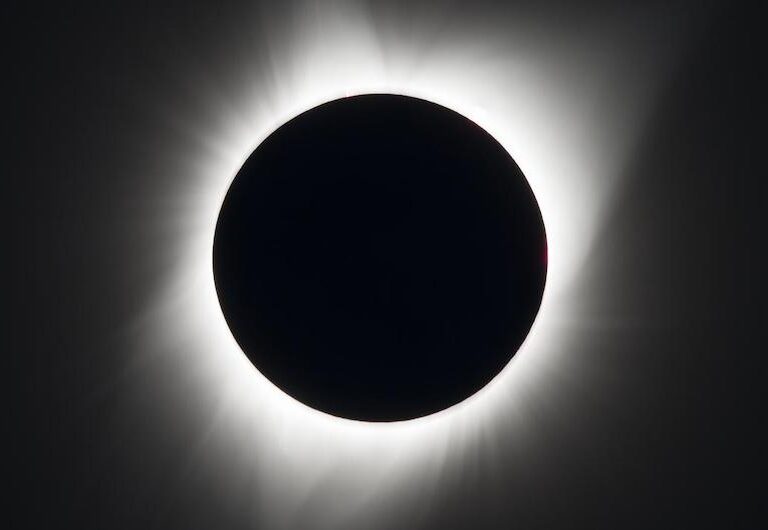For many people in the U.S., the total eclipse of April 8, 2024, will be a life-changing event. For me, it was the eclipse of March 7, 1970, on the sand at Virginia Beach with two of my fellow high school teachers, that set my life in a new direction.
On that day, the real drama began when the moon was covering about 70% of the sun from view, also known as the 70% phase. I noticed that my shadow on the sand was sharp on the left, but very fuzzy on the right. A few minutes discussion revealed the reason: it was the crescent light source caused by the moon’s shadow being cast on earth.
All this time, the sky was growing darker; but as late as 1:30 p.m., at 96%, there was still no hint of the drama yet to come. I started looking through my binoculars with one and a half minutes to go, when my co-worker Cal warned “it’s coming fast now.” About 15 seconds before the moon entirely blocked the sun in an event that we call “totality,” he yelled “Joe—the fringes!”… and I turned to see light and dark bands moving across the sand at around 5 miles per hour. I watched for a few seconds, yelling “the fringes! There they are! The fringes!” Then I ripped off one filter from my binoculars and looked back at the sun. In a few seconds the diamond-ring effect appeared, the last burst of light from the photosphere. Then Bailey’s Beads (the last bursts of sunlight streaming through lunar valleys) flashed into view, and I ripped the last filter off my binoculars. In my haste, I lost my balance and fell; and in a kneeling position, I looked up to see the sun’s corona. I looked around and saw—if that’s the word—the darkness that surrounded everything.
Venus was shining very brightly just west of the sun. I also managed to spot Mars and Saturn, having memorized where they should be. The street lights had turned on, and the horizon was red in all directions.
The sensations crowded in on me with overwhelming speed and power. The breathtaking silver splendor of the corona; the fragile crimson light of the horizon; the fierce brilliance of Venus; the deathly black disk surrounded by a ring of fire. As a member of homo sapiens, I was awash with feelings of fear and insignificance. Perhaps the ancient terror still lingers in some form.
After two minutes, I could see giant, red, snake-like figures (“prominences”) at the sun’s edge, followed in a few seconds by Bailey’s Beads. In a few more seconds, I saw the fringes again—but was too busy screaming at everyone around me to remember much detail. By the time I looked up, about 10 seconds after totality, the beach was bathed in a very intense light. Our eyes must have gotten dark-adapted in the preceding two and a half minutes. I feel sure that had I looked to the northeast, I would have seen a black shadow moving over the Atlantic Ocean. But the excitement was too great, and I forgot to look.
In a few minutes everyone had started to dismantle their equipment. Pretty strange, since there was still a 99% partial eclipse overhead. But having experienced the grandeur of totality, it was natural to disdain such things as partial eclipses. So we threw everything in the car and joined the procession of cars winding north on Atlantic Avenue.
The next day, back in New York, there could only be one mission: buy my first telescope. Which was illegal, because of New York’s Sunday “blue laws” in effect at the time. But there could be no question of waiting another day. I found a friend to drive me to Long Island, where someone had a used scope for sale. The first of many dozens, over a 50-year career in astronomy.
In the months that followed I decided to drop my career as a high school math teacher and create a summer astronomy camp for teenagers in the Mojave Desert. The camp attracted now-famous astronomers including Neil Degrasse Tyson. I’m sure that as the total eclipse crosses the United States this month, an eager student will have the same life-changing experience watching it as I did.
Source link

